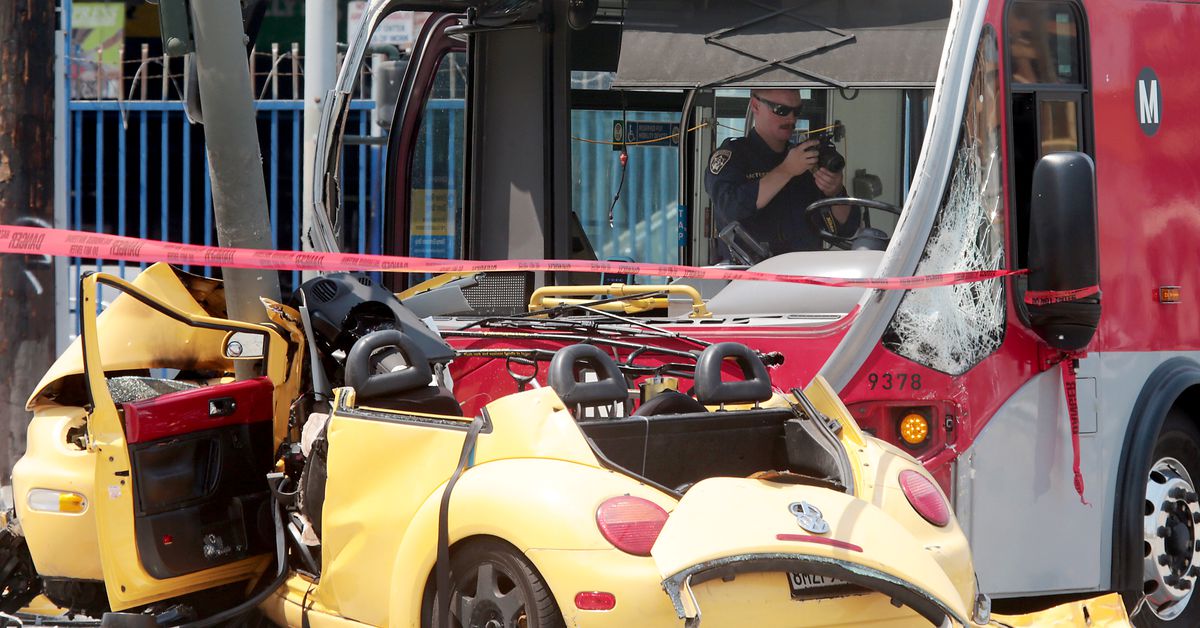The pandemic was the bloodiest year for driving in over a decade
Source: The Verge added 04th Jun 2021Road deaths jumped 7.2 percent in 2020 from the year before, hitting a 13-year high, even though people weren’t driving as much, according to the National Highway Traffic Safety Administration (NHTSA). But while NHTSA’s numbers paint a grim picture, they offer only a glimpse at what’s shaping up to be a historically bloody year of driving.
Overall, 38,680 people died in car crashes in 2020, the highest number since 2007. But it’s worse than it sounds, since the number of miles driven in the US dropped by 13 percent. That means every mile someone drove last year was more dangerous than it was the year before.
Heeding the call to “stay home,” Americans drove less during this pandemic year. But those who did get behind the wheel engaged in more reckless behavior, like drinking and driving, speeding, and failing to buckle up. But while this certainly raises questions about our judgment as drivers, it also cast a harsh light on the hidden dangers in our nation’s road system.
“It’s mind-boggling and extremely frustrating to see the tremendous loss of life from COVID compounded by preventable traffic crashes,” Pam Shadel Fischer, senior director of external engagement at the Governors Highway Safety Association (GHSA), said in a statement.
NHTSA found that fatalities rose in most major categories, including passenger vehicle occupants (up 5 percent), motorcyclists (up 9 percent), and bicyclists (up 5 percent). The number of pedestrian deaths in 2020 — 6,205 — was flat compared to 2019, which is still alarming, given that year was among the deadliest for pedestrians in 30 years.
These estimates are actually fairly conservative, since deaths in driveways, parking lots, or private roads are excluded. Also, if someone dies more than 30 days after their crash, it doesn’t count. That means as many as 1,000 deaths aren’t getting counted every year, according to the National Safety Council (NSC), a 108-year-old nonprofit focused on health and safety in the US.
Using the NSC’s criteria, last year was even worse than the government is willing to admit, with an estimated total of 42,060 road deaths, up 8 percent from 2019. This also takes into account a similar decrease in total vehicle miles traveled compared to 2019.
There’s plenty of anecdotal evidence to back this claim of more reckless driving. A report from last year by the GHSA noted that police in Colorado, Indiana, Nebraska, and Utah have clocked drivers going more than 100mph on highways, while in New York City, automated speed cameras issued 24,765 speeding tickets on March 27th, 2020, early in the lockdown, which was nearly double the number issued daily a month earlier.
But the rise in reckless driving may say more about road design in the US than it does about Americans’ skills as drivers, said Greg Shill, associate professor at the University of Iowa College of Law and a faculty member at the National Advanced Driving Simulator.
The assumption of many traffic engineers in the US is that wide roads are safer. This relates to the concept of “induced demand,” in which road-widening projects encourage more people to drive, thus failing to improve congestion. In a year with less driving, those wide roads proved to be dangerously tempting to many drivers.
“I’d call it the monkey’s paw of highway engineering,” he said. “Highway engineers got their wish (free flowing traffic, “Level of Service A” in the parlance) but with it came an extraordinary increase in deaths per mile traveled.”
It’s very difficult to reverse these projects once they’ve been completed. Racial justice advocates are calling for some urban highways to be torn down altogether, but more in the name of reinvesting in communities of color that have been destroyed by racist highway projects, and less so in the name of safety. And Vision Zero, the project aimed at reducing the number of traffic fatalities to zero, has been criticized as an empty slogan without a proven record of success.
Shill argues that better transit is needed to get people out of their cars, but in a pandemic year, when public transit ridership across the country plummeted, it’s unclear what benefit better subways and buses would have brought.
There are a host of other ideas: automated speed enforcement; reforming the Manual on Uniform Traffic Control Devices for Streets and Highways, the 862-page manual governing traffic signs and signals; and cutting speed limits in dense areas to 20 or 25 mph.
“I don’t want to overstate it, because turning around a transportation system is like turning a battleship,” Shill said. “But the new administration and new USDOT leadership seems to be genuinely concerned with this and is engaging with it. I’m eager to see what they do.”
But the likelihood of progress in the near term is bleak, and in the meantime, over 100 people are dying in vehicle crashes every day. We have internalized these deaths as the necessary trade-off for having the freedom to drive as much as we want. And in a year when we weren’t driving as much, those costs were laid bare for all to see.
brands: Fischer It New other Police TORN Urban Vision WAS media: 'The Verge'
Related posts
Notice: Undefined variable: all_related in /var/www/vhosts/rondea.com/httpdocs/wp-content/themes/rondea-2-0/single-article.php on line 88
Notice: Undefined variable: all_related in /var/www/vhosts/rondea.com/httpdocs/wp-content/themes/rondea-2-0/single-article.php on line 88
Related Products
Notice: Undefined variable: all_related in /var/www/vhosts/rondea.com/httpdocs/wp-content/themes/rondea-2-0/single-article.php on line 91
Warning: Invalid argument supplied for foreach() in /var/www/vhosts/rondea.com/httpdocs/wp-content/themes/rondea-2-0/single-article.php on line 91
